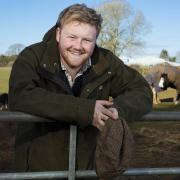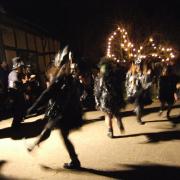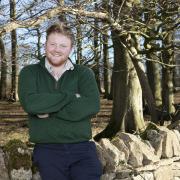It used to be normal for people to provide their own food, but by the 1970s we'd become consumers rather than producers. Now, in the 21st century, we've come full circle
There’s something special about eating fresh, local food. Whether it’s a juicy apple, a crisp salad, delicious potatoes or a flavoursome joint of Old Spot pork. Just knowing that the food comes from as little as 10 or 20 miles away makes us feel good about our diet and our attitude to the planet.
So just imagine what it’s like if the meat, fruit and vegetables travel not 10 miles but 10 yards. That’s the feeling being experienced by more and more people in the Cotswolds as they turn to growing and raising their own food. For some it’s a matter of choice whilst for others the economic downturn makes it a necessity. But either way, there are enormous benefits to the environment and our own health, lifestyle and wellbeing from this reconnection with the land. Of course there’s nothing new about it.
Before, and especially during, the Second World War it was normal for people to provide their own food but by the 1970s we’d become consumers rather than producers. It’s worth remembering that in the brilliant TV comedy series The Good Life, Richard Briers and Felicity Kendal were figures of fun for their snooty neighbours rather than role models. Now, in the 21st century, we’ve come full circle and it’s considered good to grow once more.
It’s a fact that across the country large farms are getting larger while middle-sized farms are being sold off and fragmented. It means that people who can afford it are now able to buy a house and a little piece of land to create their own corner of England and live their rural dream. There are great examples of these micro-farmers developing niche businesses by selling fruit and vegetables to their local shop, setting up a weekly stall at the farmers’ market or even just having some produce and an honesty box at the top of the lane.
As a livestock farmer and rare breeds enthusiastic, I’m particularly encouraged by the number of people wanting to keep small numbers of chickens, sheep, pigs and even cows. It’s a great education for those who have children for the youngsters to be collecting eggs, feeding the livestock and generally getting to grips with where their food originates. It’s also enormously important to give little ones the responsibility of looking after a few animals. Apart from anything else it gets them out of the house and away from their computer games and electronic gizmos.
Taking the plunge and becoming a livestock owner isn’t as daunting as it might at first appear. As long as you’re open to taking advice then there’s plenty of help and guidance available. Most breeders and experienced smallholders are happy to share their wisdom. You could turn to the various industry magazines and journals or one of the many books on animal husbandry which have become available since the pastime has become more popular.
My weekly appearances on Countryfile mean that lots of people turn to me for advice and I feel that I have a responsibility to give them as much of a helping hand as possible. So I’ve brought out a range of DVDs in the Smallholder Series about looking after sheep including how to breed them, tips for lambing, the best way to promote their meat and most importantly how to keep them in tip top condition.
I’ve always said that the key to good animal health is nutrition, so if you feed them well then they’ll be in a better position to fight off illnesses and be far less prone to disease. But smallholders with perhaps half a dozen ewes have often complained that foodstuffs and supplements are only available in vast quantities for large, commercial farms with hundreds of animals. So I’ve been working with a Herefordshire company called Zintec to produce minerals and vitamins in small tubs which are affordable and easy to manage. We launched Adam Henson’s Smallholder Products at an agricultural festival near Builth Wells and it was obvious that visitors there were as interested in the welfare of their animals as I am.
But if keeping animals is still a step too far then there are lots of alternative ways of getting back to the land. Allotments have become a trendy must-have in the last few years and the waiting list for plots could rival the queue for tickets at a Take That concert. Another inspirational scheme is community farming. They’re run as co-operatives with the farmers and their customers sharing the risks and the rewards of the farm. Stroud Community Agriculture runs a very successful scheme at Hawkwood and the idea is taking off in other places too. So if you’re brave enough to go out and plough your own furrow, the good life awaits.
It’s worth remembering that in The Good Life, Richard Briers and Felicity Kendal were figures of fun…


























